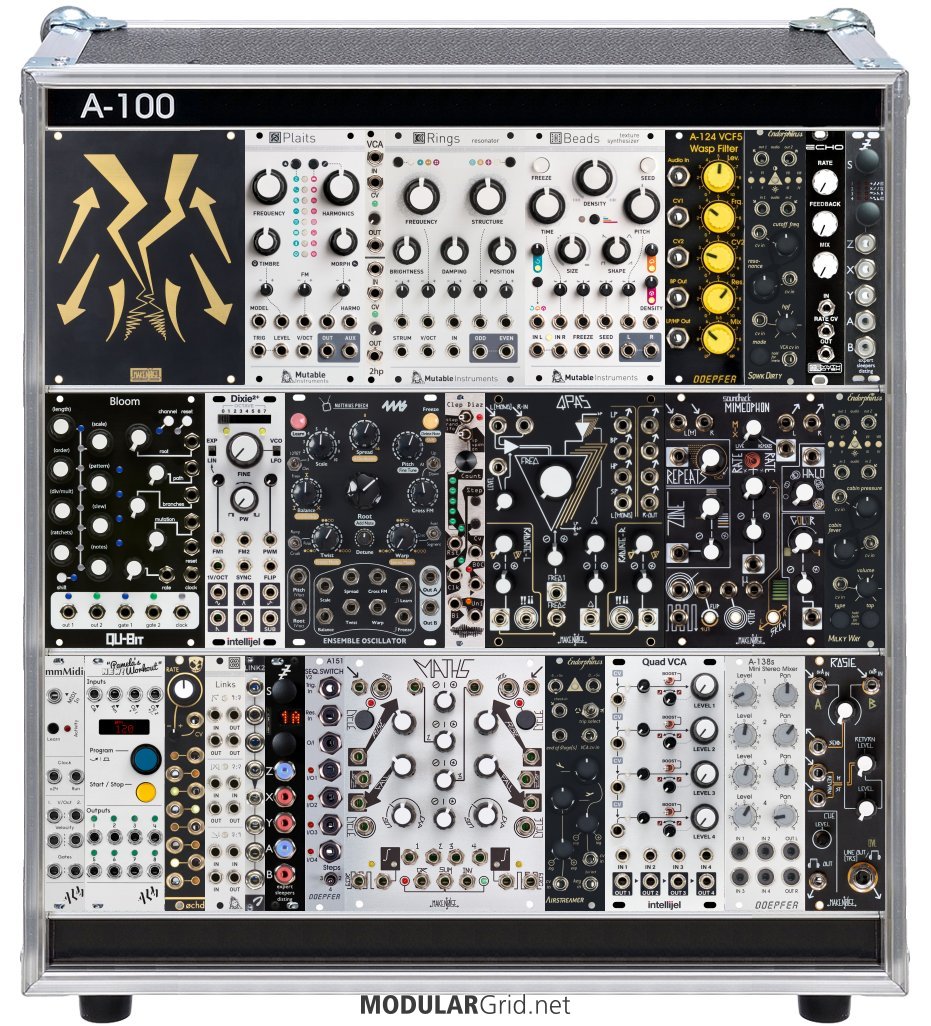Hi Everyone,
I'd like some input on my current rack. It's the result of around 2 years of building up. I mainly enjoy jamming with it (although there's never enough time) and using it to add sounds to tracks I make in Ableton. I have Electronica and Ambient leanings, but have a broad musical taste. I am a child of the 70s and therefore came of musical age in the late 80s with all the synth sounds you would expect.
I am at an impasse. My rack has evolved over the last two years without a strong vision, and now I'm looking at a nearly full case and feeling that something's missing. Therefore I'd love your input on what you might add / change / do differently.
Here's my thoughts, to help give a picture:
I think I’m missing inspiration around modulation. I have plenty of sources (clep diaz being the most recent addition) but struggle to get great results out of them. Any tips / learnings / changes / additions?
I don’t think I’ve ever really ‘clicked’ with Beads. Aside from a nice reverb I’ve never managed to get into a flow with it or truly ‘play’ it. I’m thinking I should have bought a Morphagene instead to manipulate and warp audio. Any thoughts on this?
I’m not really clicking with Bloom at the moment. I bought it for the evolving / fractal nature of it, but on reflection I think I’m missing a sequencer that gives me more hands on / immediate control. Of course I can use Ableton for this (and I have a Keystep Pro too) but having something else in the rack might open things up for me and means I won’t need to break from the patch to change / modify sequences. Thoughts?
I have a feeling I’d like a complex oscillator. Last Osc bought was the 4ms Ensemble but honestly I haven’t clicked with it (or spent enough time learning it, probably). I seem to struggle with too many switches, buttons and modes and prefer the more ‘nob per function’ approach. I’ve looked at the Rubicon2 and DPO as potentials and would welcome your thoughts!
Recently I’ve been interested in linking more directly with Ableton / Max to feed modulation in and out of the rack (and was therefore looking at the Expert Sleepers ES-8 and 9). I’m not a proficient Max/MSP user but like the generative / logic coding base of it (am a big Autechre fan). Does anyone have any thoughts or advice on getting this going?
Wow – there’s some big questions there, no wonder I’m a bit stuck! I hope the above makes some kind of sense and I welcome your thoughts and observations!
Cheers,
-J


